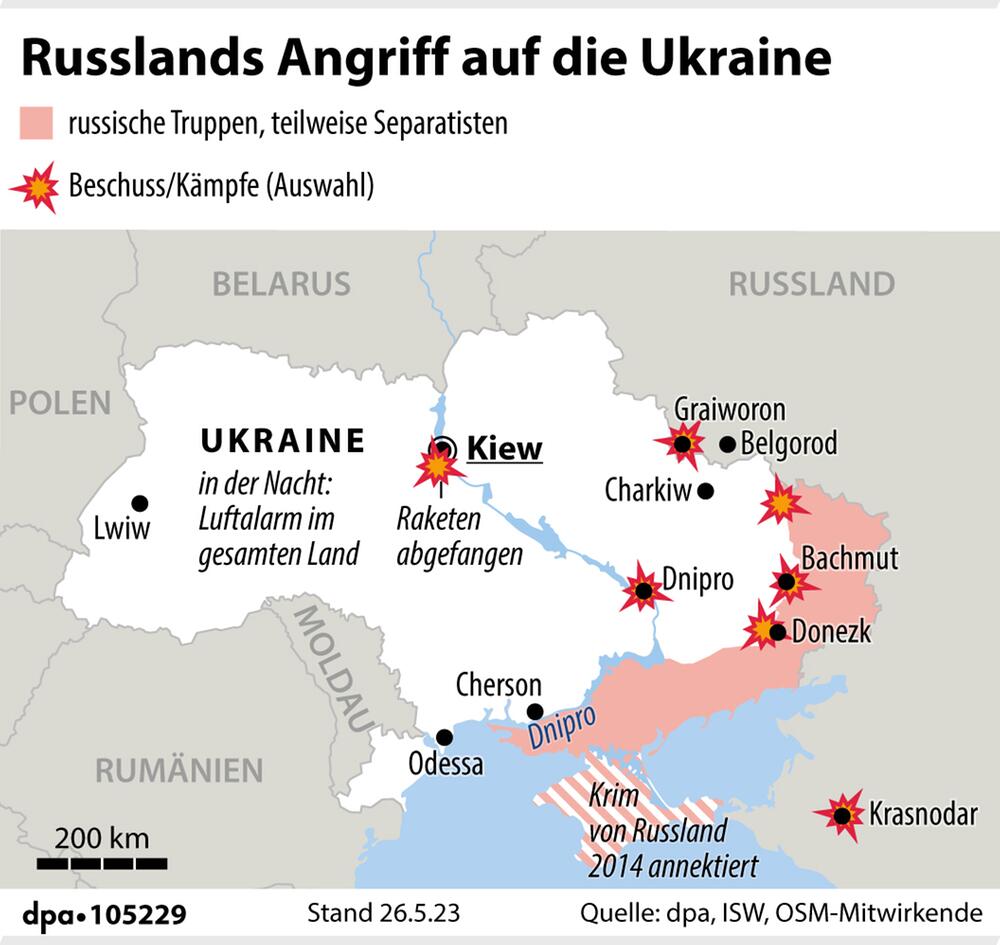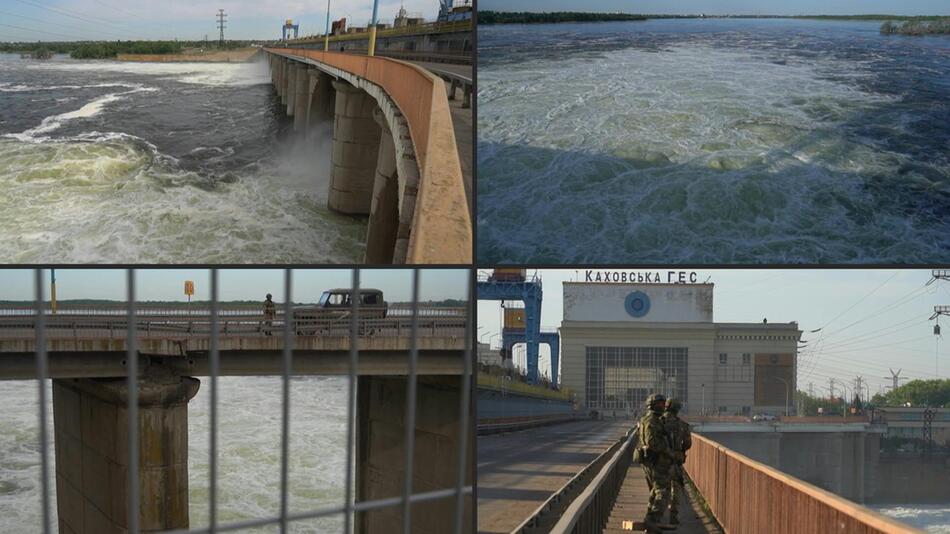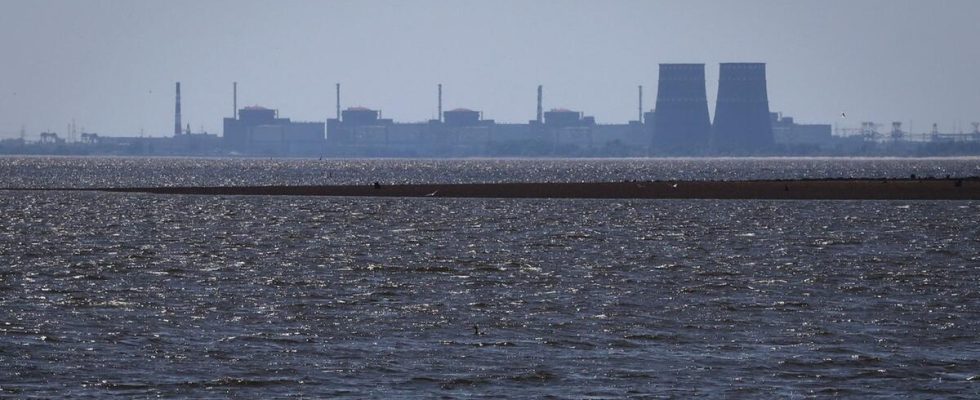live ticker
war in Ukraine
Updated on 06/10/2023 10:49 am
The Zaporizhia nuclear power plant – here in the background of the shallow Kakhovka reservoir – has been under Russian occupation since 2022. (Recording date: June 2023)
© dpa / Kateryna Klochko/AP
- 10:41 a.m.: ➤ AKW expert: Concern about Zaporizhschja despite months of cooling reserves
- 9:54 a.m .: Several dead and injured in night drone attack on Odessa
➤ AKW expert: Concern about Zaporizhschja despite months of cooling reserves
According to a reactor safety expert, the safety of the Ukrainian nuclear power plant Zaporizhia is in danger in the medium term after the destruction of a dam. The water supply for the cooling systems is guaranteed for a few months despite the dam bursting, said Nikolaus Müllner from the University of Natural Resources and Life Sciences in Vienna.
But in view of the acts of war, it is questionable whether this time window can be used to develop alternative water sources, said the head of the Institute for Safety and Risk Sciences of the German Press Agency. “It’s obviously a threatening situation,” he said.

© dpa infographic GmbH
In addition, IAEA chief Rafael Grossi had warned that the large cooling pond of the nuclear power plant could be damaged by the warring parties. In addition, according to Grossi and Greenpeace activists, there is a risk that the dyke around the pond will come under excessive pressure and be damaged due to the changed water levels.
Europe’s largest nuclear power plant draws water from the dammed Dnipro River to cool the six decommissioned reactors and nuclear waste. According to the International Atomic Energy Agency (IAEA), the level of this reservoir could soon drop so low that no more water can be pumped out of it. However, the nuclear power plant has a cooling pond about two by three kilometers in size, as well as smaller cooling ponds, channels and wells with which the cooling systems can continue to operate for months in order to prevent catastrophic overheating as in Chernobyl (1986) or Fukushima (2011).
Under normal circumstances, this time window is sufficient to lower the intake pipes in the Dnipro reservoir, said Müllner. However, it is difficult to assess whether this is currently possible, “because the nuclear power plant is right on the front line,” said the expert. (dpa)
+++
The situation at a glance
Since February 24, 2022, Russia has been waging a war of aggression against Ukraine from the air and on the ground. Shortly before, President Vladimir Putin had questioned Ukraine’s right to exist as an independent state and recognized the so-called People’s Republics of Donetsk and Luhansk in eastern Ukraine.
Since then, the Ukrainian army has been fighting the invaders as best they can. There are reports of thousands dead on both sides. How many soldiers and civilians have already died, however, cannot be independently verified. The fact is: the humanitarian situation in Ukraine is getting worse every day.
The refugee agency UNHCR has now almost as 8.3 million Ukrainian refugees in Europe registered (as of May 23). The refugees are mainly women and children, as men between the ages of 18 and 60 are in most cases not allowed to leave the country.
The EU and the USA reacted with sanctions. They are also supplying arms to Ukraine, and Germany is also supporting the country with arms deliveries. Ukraine also received Gepard-class tanks from Germany. (dpa)

© dpa infographic GmbH
Further news on the war in Ukraine from June 10
Several dead and injured in drone attack on Odessa at night
In the Ukrainian port city of Odessa, several people were injured and killed by nighttime Russian drone strikes. “As a result of an air battle, debris from a drone fell into the apartment of a multi-storey house and started a fire,” the high command of the Ukrainian Army Group South said on Facebook on Saturday. The flames killed three civilians. 26 other people were injured.
The Ukrainian Air Force later said that Russia directed 35 drones and eight missiles at targets in Ukraine. 20 Iranian Shahed drones and two ballistic missiles were shot down. In addition to Odessa, the Russian attacks were also aimed at targets in the Poltava region and in Kharkiv. (dpa)
+++
With material from dpa and AFP
The tickers of the past few days to read:

The Kakhovka Dam was built in 1956 when Ukraine was still part of the Soviet Union. He supplied large areas with drinking water and electricity.

